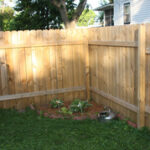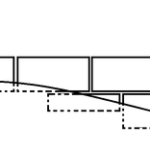As the economy is still in a deep recession, more people are choosing to fix up their homes instead of going on a vacation. Home improvements have began to increase in the past couple years with people choosing to fix their lawn, garden, plumbing and even fencing. It is important to remember that vinyl fencing is more expensive than the wood fencing, but you do not have to maintain the vinyl fencing like you do the wood fencing. If you are going to be installing a vinyl fence this year as a home improvement project, here are some great tips you need to remember.
The first thing you need to remember when you are installing your vinyl fencing is that it is not like a wood fence. The vinyl fencing looks very different from the wood fencing and installing it is different too. If you are not qualified in the fencing department, then you might want to hire someone to work with you who knows about installing a vinyl fence. You can go around and visit different houses that have vinyl fencing to see how the fencing looks once it is completed or you can also ask the home improvement store associates to help you when it comes to installing your vinyl fence.
You also will need to gather all of your safety equipment before installing your vinyl fence. Depending on what you are going to be doing with the fencing, you might need some safety glasses and some work gloves. Be sure to have all of your important work materials and safety items with you before you start your vinyl fencing installation that way you do not have to stop to get something you need.
Also, you are going to need some tools and equipment for your vinyl fencing installation. You are going to need the fence posts, the vinyl fence itself, hammer, nails, cement and a hole digger. Be sure to make a checklist of the materials you are going to need and then get them at a home improvement store. You can ask the store associate at the home improvement store what materials you are going to need so that you can leave there knowing you have everything.
You should also not install your vinyl fence on a cold day or a day when the ground is frozen. When you set the fence posts into the ground it needs to be at a time when the ground is soft and flexible. The frost can actually make your fence posts come out of the ground so it is important to make sure your vinyl fencing is installed on a nice day so that the fence post can be in the ground far enough. The fence post should also be wider at the bottom than at the top, since freezing occurs first from the top of the ground. Making sure the hole is wider at the bottom of the hole will help keep the post in place even when it does freeze.
When you are buying your vinyl fencing materials, you should also keep in mind that you should buy stainless steel and not some cheap metal. When you install your vinyl fencing you want to make sure that all of the parts and hardware you will need have a lifetime guarantee since the materials will be out in the elements. Now you might not have the money for stainless steel hardware but this is one area of the vinyl fencing installation that you should not try to save money on. Stainless steel is pretty much weather-resistant no matter the conditions so you need to be sure to get those parts because this will ensure your vinyl fencing is going to last you a long time.
Since most people live in weather where it can go from hot to cold pretty fast, you need to leave room in your fence post holes. The expansion and contraction naturally occurs when the weather changes and it can really damage your vinyl fencing if you do not leave space for this process to occur. This is a very good example of why you should not install vinyl fencing when it is too hot or freezing cold outside. Sometimes people will forget about leaving room for the expansion and contraction and that is when they run into a lot of problems. You do not have to leave a lot of room but leave about three inches each way to ensure that your vinyl fencing will stay strong no matter what the weather conditions are.
When you get the fence post holes dug, you might want to go around with a level and a tape measure to ensure that the fence posts are set in the holes level and they are evenly spaced apart. You should do this before you get too involved in installing the vinyl fencing so that you can make adjustments now rather than later. Making sure everything is level and spaced properly will also ensure that the vinyl fencing is durable and going to last.
When you are installing your vinyl fencing you should always start by installing the corners of the fence. Installing the corners of the vinyl fencing will allow you to see the frame of the fencing and to see where you are at as far as installing the vinyl fencing properly. The corner installation will also help you when it is time to install the longer fence sections because it will provide a place that the sections can rest on. This is also important because you want to make sure you have the fence level and the corners will help you map out the overall look of the vinyl fencing.
You also need to make sure you set the vinyl fencing posts into the ground in a level manner before using your cement. Once the cement is in place there is not much you can do so before you make the vinyl fencing final, make sure everything lines up and that your fence posts are level and straight. It is also important to install any final items you have such as a rail or anything else you have. The cement will make everything final so you might want to go around and check every post and every section of fence to make sure it is properly installed.
This is the part where you want to put your cement into your post holes for a finalization on your vinyl fencing. You want to mix the bags of cement for each hole on at a time to make sure the cement is mixed properly and that it does not dry before you get to your next hole. Once you have the cement poured into the hole you need to put about an inch of water on top of it. The water on the top of the mixture will help it dry at a reasonable rate and will also help the cement stop from pulling water or other materials from the surrounding dirt. Lastly, you then can put the gates on the fence and secure them with their hooks.





